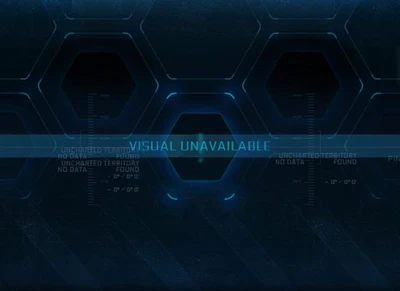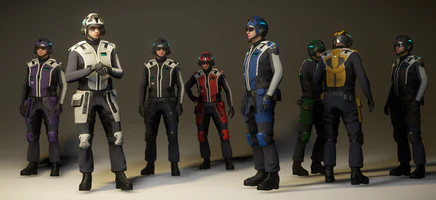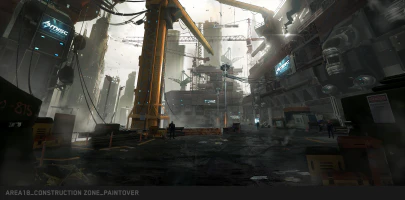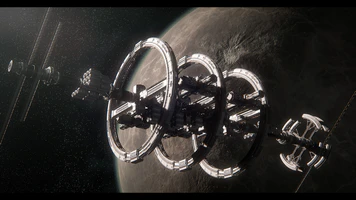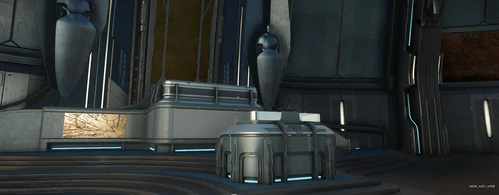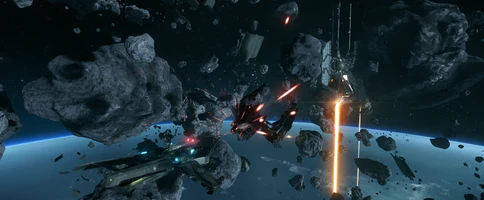Greetings Citizens,
What a show! We hope you enjoyed the CitizenCon 2015 livestream. For our part, the team is thrilled to have been able to finally share some of the incredible work being done on Squadron 42 and other aspects of the game. We hope it lived up to your expectations, and we can’t wait to push the envelope even farther! But now, it’s time to find out how we did it! This month, we asked each studio to write their monthly report as through CitizenCon had already happened, so you can hear exactly what they worked on to make the event happen. (It’s also important to remember that this work wasn’t just for a demo; everything you saw today was part of larger game development milestones!) Read on for details.
SUBJECT: ORGANIZATIONAL AND STUDIO CHANGES
Recently, we’ve heard from backers who are worried over rumors that individual CIG studios are closing. This is not the case! In fact, Cloud Imperium Games is continuing to expand as we continue to find talented employees; we had twelve new developers start in September, alone! The root of this confusion seems to be the fact that the reorganization that began when Erin Roberts took over as head of global production is changing the specific requirements of each studio. In the spirit of open development, we are sharing the exact e-mail Chris Roberts sent to the team on the subject of restructuring two weeks ago.
From: Chris Roberts
Sent: Friday, September 25, 2015 8:12 AM
To: CIG GLOBAL STAFF
Subject: Organizational and Studio changes
Hello everybody,
I wanted to update everyone on some organizational changes we are making to maximize our creative synergy and development abilities.
It’s no secret that having a distributed development structure presents challenges as much as it provides advantages. At the outset of Star Citizen I decided that I wanted to go where the talent was rather than try to make the talent come to where I was. Without this approach we wouldn’t have some of the most talented people in the industry working on star Citizen. There are people in Los Angeles, Austin, Manchester and Frankfurt that are only working on this game because we have offices in these locations. We truly have a WORLD CLASS team.
With every positive there is always a negative, and that negative is the communication challenges that present themselves when people all working together on the same project are separated by large distances and time zones.
At the top level of the company, especially on the development side we’ve been discussing how best to reduce these issues while keeping the positive.
We’ve begun to think about how we can focus development at our various studios so people working on a certain feature or discipline can be concentrated for maximum effectiveness. Audio in the UK is a great example – the sound design and audio implementation in Star Citizen is just amazing (especially for our stage of development) – and this is partly because Lee Banyard, our Audio Director and almost all our audio staff are concentrated in Manchester, allowing them to frequently interact and problem solve in a way you can only do when in the same location. This is why when talking to Zane Bien about the possibility of becoming the global UI Creative Director, part of the discussion was about him leaving the beach and sunshine of Santa Monica to be with David Gill and Karl Jones and the rest of the UI team in Manchester that we are building to handle the global UI needs of the project.
We’ve also been thinking about how to make sure the key creative leaders in the company spend more time together and most importantly allow me to spend quality time with my key development lieutenants as I was feeling spread way too thin creatively – especially when we were in six game development locations with Illfonic and BHVR. When it was just Austin I could spend a lot of time between Austin and LA but as we’ve expanded to more locations and added external development my ability to spend time on the ground at each location has been reduced.
After much deliberation we have decided on the following:
To increase creative and game direction synergy Tony Zurovec will be spending significant time in LA (but still be based in Austin) in order for me and him to work closer together in getting the Persistent Universe in the hands of players.
Sean Tracy will relocate to LA as the Global Content Tech Director, allowing him to have a bigger impact on the whole company and help the LA team.
We’ve also decided to further continue the streamlining of our development groups – We’ve made a decision to focus the US engineering into two teams –
The backend services which is headed by Jason Ely will remain in Austin and will continue to work closely with Live Ops, which will also remain in Austin.
The Space and Persistent Universe game play and systems will be concentrated in Los Angeles, where things like the new item system and vehicle / space systems are being developed. This makes sense as Austin is weak on engineering CryEngine technical knowledge whereas LA is strong, and to really have an effective gameplay team we need one fairly large unit that can interact with each other on a daily basis. Having Stephen Humphries out in LA working closely with Paul Reindell and Mark Abent has really cemented the upside of having the people all working on the same systems being in the same space.
The current PU Art and Animation team will also stay in Austin, as will the Austin ship artists. Mark Skelton will be based in Austin but will split time between Austin and LA as the US Art Director. I really welcome having Mark out in LA regularly as I think it will significantly help the team.
On the design side Pete MacKay will move from Austin to LA to be on the ground with John Pritchett and the rest of the ship balance team to work closely with tuning our ships and weapons. Rob Reininger will remain in Austin to support Cort and prototype Persistent Universe locations.
We will staff up a small QA staff in LA, potentially with some key folks from Austin in order to support the gameplay work and also be collocated with the balance team (which has always been an issue as the designers that balance the space combat and flight aren’t in the same place as the QA teams that give feedback on this). We will also look to increase QA in Frankfurt for core engine and tech testing. QA in Austin will focus on Live release support and testing.
We are going to split Dev Ops (build support, internal distribution of builds) from Live Ops (deployment to the cloud, distribution to the players, maintaining & monitoring the game servers). Dev Ops will move to Frankfurt to be next to the engine team and the group that knows the absolute most about the engine and how best to compile it.
On the Production side Jake will remain in Austin and run Austin Production, with Jason Hutchins and Mark Hong both moving out to LA to help bolster the LA production staff – Having Jason in LA will be a great help as he has lots of development experience and has experience in getting big complicated online games out the door :)
Global IT will remain in Austin.
John Erskine will continue to run our various online operations, digital publishing and IT from Austin but will also regularly spend time in LA in order to actively create opportunities for our senior executive staff to interact in person regularly (no matter how good Skype is, it’s still not that in person discussion about an idea around the coffee machine)
We are actively hiring in Manchester and Frankfurt to build up the ship, environment, prop and character teams and in all locations to bolster the engineering teams.
Finally we are trying to focus our remaining external development partners on content creation as opposed to engineering , which we want to bring in house as much as possible.
We will have more internal staff than we have now – they will just be distributed differently between our four studios in LA, Austin, Manchester and Frankfurt.
As with all reorganizations there will be some roles that will no longer exist in their current location – we are really trying to reduce the single man outpost syndrome – as well as concentrate feature teams in single locations. In the event relocation doesn’t make sense for the roles that are now redundant we are at the minimum giving the small number of people affected five weeks’ notice as well as two weeks’ severance to allow people to try to land on their feet. In some cases we are allowing for work until the end of the year to give even more runway. This is the not so great part of the reorganization as we will definitely be losing some hardworking and talented people and we haven’t come to this decision lightly but ultimately we felt we owed it to the backers and the game to make sure we were allocating our resources effectively. So for the people in this category I’m sorry and hope the big lead-time helps.
I know for some of you these are some big changes but we wouldn’t be doing them if we truly didn’t believe they would help us get the project out and work closer together as a team. Please feel free to talk to your Studio Director if you have any questions or concerns.
We have an amazing opportunity to build something special. There is nowhere else that we would be given the support, the funding to make the open universe game we are making. No publisher or VC would ever back a game this ambitious on a PC, and probably not even on a console. I see the potential with Global Entity Ids, Entity Streaming, Large World, Local Grid and the Zone System coming on line to really build something that has both incredible fidelity and massive scope. I don’t think our backers are expecting just how cool their first experience of a large world map and multi crew will be. I also don’t think they are prepared for just how amazing Squadron 42 will be and how it’s going to push the envelope for interactive storytelling and action. I’m looking forward to blowing them away in two weeks and then putting the content in their hands and continuing to add and improve until they have a game that no one can compete with.
We will make history with Star Citizen. People still talk about Wing Commander 25 years later. We can go one better with Star Citizen.
It won’t be an easy road. We’re very public and there will always be obstacles trying to block our path, whether they are normal problems that crop up in development or outside agitators that are threatened by a completely crowd funded project building a dream game they wished they had the talent or support to build. Just remember that this is all noise and at the end of the day the game will speak for itself. It always does and that is the best reply to anyone that doubts our ability to deliver something great.
Let’s blow them away at Citizen Con and get Star Citizen and Squadron 42 in people’s hands!
-Chris
CIG SANTA MONICA
Greetings, Citizens!
September will be a month to remember. We finished so many major milestones we can’t wait to share with you below. We’ve been knocking things out left and right here in Santa Monica so check it out and let us know what you think!
Engineering
With a lot of action happening on the Santa Monica Engineering Team, we have been able to knock a few balls out of the ballpark.
The Engineering Team’s focus has been on improving the game’s stability. Lead Engineer Paul Reindell and Engineer Allen Chen have made various improvements to the servers, resource management, and Large World support. This work is directly improving performance.
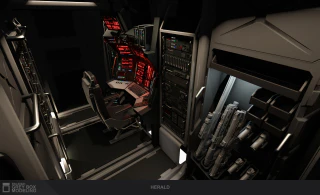
AI Programmer Chad Zamzow has completed an AI module that allows players to fill empty seats in Multi-Crew ships with AI players during those long, lonely voyages into the blackness of space. Now we just need to teach them to fight! The visual effects of the Quantum Travel feature have had their finishing touches programmed by the team while Bugsmasher Mark Abent has been a titan in spearheading the refactoring of our Item System all while taking care of multiple Blocker and Critical issues that have been sent his way in preparation for the next release.
As part of the Engineering Team, UI guru Zane Bien has implemented a series of Flash callbacks which allow the different station screens to communicate with the engine. This and other completed milestones steer towards having players being able to take on various roles in a Multi-Crew ship by making sure each station has its own UI based on that player’s designated role.
Design
In the weeks following the massive amount of completed work for our Multi-Crew tech during the month of August, the Santa Monica Design Team has been capitalizing on the creative energies rippling through the office.
We completed designing the next step in the evolution of GOST that allows our designers greater flexibility while minimizing its resource footprint by using an “Entity Token” system. Senior Gameplay Programmer Steven Humphreys has been finalizing the system’s long-term goals. Many of those milestones having already been completed, the next are teed up for completion.
On the ship side, Designer Randy Vazquez and Senior Designer Kirk Tome have been working on the white-box designs of the Caterpillar, Xi’an Scout, and Drake Herald. Randy has finished writing design specs for how the Caterpillar’s various components will work together with emphasis on the new Salvaging system while also finishing the prototyping stage for these ships. The Drake Herald and Xi’an Scout just finished white box animation design with Kirk, where one of the biggest challenges was how to finesse the ergonomics of the alien Scout’s interior to be compatible with human animations – you’ll remember that a similar considerations were necessary for the human-flyable Scythe and Glaive as well.
If you frequent the chatroom on the website, then you will know our Designer Matt Sherman has been discussing his progress on the continuing development of the Ship Component systems, with several major milestones completed this month. These new systems have inspired discussion threads on our forums with regards to the Hacking mechanic and proposed further development on the self-destruct mechanism in ships.
Art
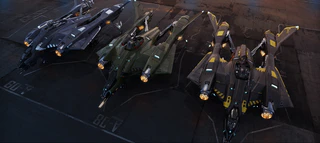
The LA art team hasn’t had any time to slow down since last month! This month we’ve been plugging away and focusing our efforts on completing some of our longer-term ship and character goals – with a special focus on Squadron 42’s needs for the character team, and Multi-crew for the ship team – as well as working in tandem with design to flesh out the art for some ships that will be bringing some exciting new mechanics to the Verse!
Our character art team has had their most exciting month yet in preparing for Squadron 42 and beyond. In September we completed our male and female base sculpts, as well as for several other special characters. It has been a long process of iteration to reach the level of fidelity we want, but we’re very happy to say we’re there! Long term clothing and armor variations depend so much on the base sculpts being available, so that means it’s now full steam ahead for those aspects of character customization. This is a huge accomplishment since it’s not only a ton of hard work – but also sets a baseline for the rest of our characters. Lots of effort has gone into making these compatible with motion capture and body scan data as well, and we’re just beginning to see our first completed characters coming through these final stages. We’ve also put some final polish time into the Vanduul and Xi’An to make them even more realistic and impressive.
We’ve also made significant progress with ship modeling. The first half of this month saw lots of work on some of our smaller in-progress ships – for example, the MISC Reliant completed its whitebox stage, and the Drake Herald greybox is wrapping up. Towards the end of the month we concentrated resources on the RSI Constellation to culminate in one final push. Less exciting but equally important is all the hard work we’ve continued to pump into building technical tools and improving process and architecture for our ship development pipeline, which is already making our life behind-the-scenes significantly more efficient.
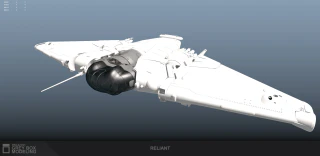
A lot of ship concept art has also been completed. Our focus for the month has been on wrapping up the Crucible and the Endeavor, which will introduce some revolutionary repair mechanics and exciting new science/and economic gameplay respectively. Both required more concept art work than your average ship… which has all been worth it to ensure that we’re bringing design’s visions to life in the best way possible. We also finished up the Vanguard variants, and have been making fantastic progress on both the Reliant variants as well as the luxury version of the P-52 Merlin also known as the P-72 Archimedes.
While we’ve primarily focused on new content, we’ve also fixed a variety of bugs. These include (but are of course not limited to!) some geometry and collision bugs across various ships, tightening up texture seams, and a whole slew of glass reflection bugs. The ‘highlight’ was a bug that occurred when we merged streams to AC 1.2 which made all of the textures on the Merlin disappear! We fixed that one right away.
Last but certainly not least is the work we’ve completed on components this month. Working hand-in-hand with the design department, we’ve blocked out all of the locations for components on all of our ships that are currently live. This was a massive undertaking, and we’re pleased to report that it went exceptionally well.
We’ve been making phenomenal progress, and the excitement isn’t over by a longshot. Stay tuned for next month’s report!
Writing
I refuse to accept that it’s the end of the month… dammit…
We’ve been on a heavy push on multiple fronts to get stuff ready for CitizenCon. To avoid spoiling any of the reveals, I’m going to speak in incredibly cryptic terms.
The entire writing team has been focused on one task in particular, meeting every day to brainstorm additional ideas about that, which has been an interesting and educational process. We’ve then been translating those discussions into lists of data as well as brief, evocative descriptions. The emphasis has been on ‘brief’ because often times it’s much more difficult to distill an idea down to a few sentences rather than having the luxury of writing for pages, more importantly, doing so can be a really valuable exercise to establish why that thing is different and unique. With this task, however, we have a character limit, so there’s a technical reason too.
Meanwhile, Will and I have been interfacing with the UK to provide dialogue lines and build some narrative scenes for two more things that are in heavy development.
All that in addition to the general workload of news updates, jump point articles and the general narrative and lore needs that come up in the day-to-day.
So, as you can tell, lots of things are happening. You’ll know it when you see it, because it’s going to be chock-full of the kind of lore you’ll really care about.
There you have it! Another productive month getting us closer to the larger vision. We have a great time working diligently to bring you the best game possible. Thank you for supporting this venture and working alongside us. Santa Monica out!
CIG AUSTIN
Howdy Citizens!
September has been focused on many items including the recent launch of the Social Module, and the upcoming first expansion to that module. Many other parts of the game are coming together and receiving multiple daily builds from DevOps and regular testing from QA – reaping the benefits of improved processes we discussed in previous monthly reports. We’re looking forward to Citizen Con which is fast approaching and will include a number of big reveals!
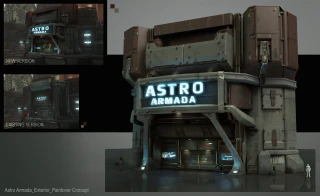
Persistent Universe Team
Art
The PU Art Team has been working towards our Social Module v1 milestone, which is the second iteration of the Social Module v0 milestone we released back in August. Much of our efforts this month have gone into what we’re calling “ArcCorp Phase 2”. This new phase of Area18 adds a construction zone that splits off back behind Dumper’s Depot.
This construction zone doesn’t have any shops or anything yet (although there are some vacant shop exteriors that you can see in progress), but is meant to provide a venue for multiple facets of gameplay in the PU. Areas like this will seem innocent enough during the day, but at night there will be loads of illicit activities taking place here for NPC’s as well as Players to take part in. We hope this area will eventually showcase the dynamic nature of the PU, where you never know what will happen in any given area until you stick around long enough to find out.
Additional features of ArcCorp Phase 2 include a gigantic crane prop created by Patrick Thomas, a gathering area for people to breath in fresh oxygen being pumped up from underground (the air on ArcCorp isn’t exactly healthy, after all) courtesy of VFX artist Lee Amarakoon, and a wide open area to drive buggies around in. A hearty thanks goes to Cort Soest for leading the charge on getting this new amazingly detailed area optimized enough to run on everyone’s machines.
Our concept team is ever looking ahead, and this month spent their time fleshing out the look and feel of additional landing zones. Ted Beargeon has been focusing on defining the differences between the various Stanton landing zones and is now shifting focus to defining the MetaClassicism architectural style. Megan Cheever has begun concepts on the Frontier>Fashion Casual clothing line, which will primarily be seen on the upcoming Levski landing zone in the Nyx system. Lastly, Ken Fairclough has been working away on look/feel concepts for Crusader. This particular landing zone is Mark Skelton’s favorite so far, and we can’t wait to show it off to you.
On the Animation front, we’ve been busy developing all of the new emotes you guys are getting with Social Module v1. We originally set out to provide 25 new emotes, then decided we’d go the extra mile and provide 50, count ‘em FIFTY, new emotes instead. We hope you guys enjoy burping, whistling, waving, standing at attention, and doing the chicken dance in the new release, among many other expressions.
Design
This month’s goals for PU Design largely had to do with preparing Social Module v1 for release. There was a lot of back-and-forth going on between our designers and animators to get the emotes implemented and hooked up, for example. There was also much time spent on getting the PTV Greycat up and running so that it could not only drive around ArcCorp, but deal damage and explode as well. We expect players will have loads of fun with this feature!
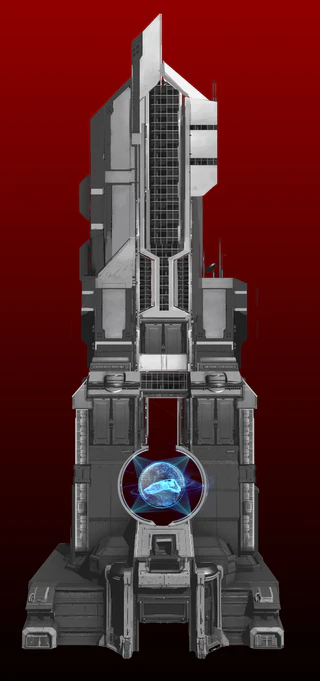
Tony Zurovec spent much of his time this month drafting up the design document for the Endeavor. This posed a number of design challenges but ultimately when implemented in the game will be one our most intriguing ships to date.
This excerpt from the link above says it all:
“The extraordinary level of customization possible as a result of the Endeavor’s modular design will allow players the most comprehensive opportunity yet to construct a multi-purpose ship according to their own precise specifications. The ability to retroactively and cost effectively alter that design – by swapping out modules at a later date – will enable owners to quickly shift between different economic pursuits depending upon the most attractive risk/reward opportunity at a given moment or simply their whim, which is a dramatic departure versus other ships with a fixed purpose.”
Other aspects of PU design were focused on kicking off a couple of new environments. We signed off on the blueprint documents for both the Casaba Outlet clothing shop and the Million Mile High Club private lounge. These two environments are now in full production at Behaviour in preparation for our next milestone.
All in all our future is looking bright, with so many fascinating and engaging features in play. We’re excited for you guys to try out the Character Loadout Selector, the improved chat interface, all the additional emotes, and the PTV Greycat in Social Module v1! As great as these features are in the upcoming release, they are just the tip of the iceberg for what we’ve got in store in the coming months. So get pumped!
Engineering
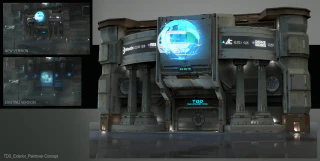
September was heavy with feature development for Social Module iterative releases, support for FPS and Multicrew feature development, as well as working closely with QA, DevOps and Production on stabilizing our Game-Dev branch after integrating our huge Alpha 1.2.0 stream down into Game-Dev. This is all a push to work towards a more stream-lined workflow for all our future feature releases and bug patches. It’s been a labor of love with big pay-offs and we’re looking forward to the continued reaping of benefits from that branch integration.
Austin Engineering has been working closely with our friends at Behaviour on such systems as improved chat (including private chat channels) and putting a lot of under-the-hood work in place to support being able to have the game choose instances of ArcCorp where your contacts are hanging out. A ton of restructuring of universe services based on tests and experiment data has been underway as well, and the Network/Server Team has been syncing up closely with DevOps on the most efficient ways to get various systems and databases in place. Working with our friends at Wyrmbyte we also got in a lot of network optimizations for both player characters and NPCs to improve your experience, not only in ArcCorp but throughout our various modules and the PU as a whole. We have also made several improvements and bug fixes to our Generic Instance Manager (GIM) and lobby system.
Long term technical discussions have been going on between Austin Engineering, the UK team and Wyrmbyte, and planning has been ongoing for a lot of crucial network/server needs and concerns. We’re working to ensure that our near and long-term core network/server needs are scoped and scheduled in together with the appropriate feature development across all CIG, with the various dependencies and puzzle pieces in mind.
In short, we’ve been juggling near term Social Module feature development, support for other near-term modules (such as FPS and Multicrew), and long-term planning and work for various network/server core systems that will be needed for all our CIG studios and Star Citizen experience as a whole!
Live Operations
QA
For the month of September, QA has been focusing on the stabilization of the Game-Dev branch. QA will begin each day by comprehensively testing each module and verifying any potential fixes. At the end of each day QA will email updates broken down by module which detail the general health of the build listing the most critical issues present and any new issues found that day.

At the same time, QA is continually testing new content. On the Star Marine front, Tyler Witkin and Andrew Rexroth have been very busy testing the newly implemented character rig and ensuring that all animations play correctly and that the hand IK (How your hands hold the weapon) are accurate and working properly. Also a new HUD (Heads up display) and Helmet UI came online this month. Tyler and Rex have been heavily testing the new HUD/Helmet UI and providing feedback. The new Helmet UI is way more intuitive with lots of combat warning indicators(warns you about grenades/incoming fire/etc).
Social Module testing has been continuing as well. Some of which include a significant expansion to Area18, updated store fronts, a revamp of the chat system, additional emotes and a new outfit changer in the Hangar.
Robert Gaither and his UK counterpart Steven Brennon have been busy testing multi-crew ship functionality and our new massive largeworld map called Crusader. Crusader is part of a prototype of an actual system in our Persistent Universe. Crusader is proving to be quite impressive and will change the way we play dramatically.
Additionally much work has been done on our back-end services. Jeffrey Pease has been working very closely with our back-end engineers Tom Sawyer and Jason Ely to ensure each resolved issue is verified fixed and each issue submitted has all the required information to be effectively investigated.
We are very happy for the official release of the new Issue Council! The Issue Council can be accessed through the Community section of the RSI website and will help to streamline player generated bug reports. Other members of the community can then contribute and vote on each issue. The Issue Council has already proven very useful and will make reporting issues a much better experience.
Each module is coming together. The true vision of Star Citizen is beginning to take shape. We are very excited to witness and share with you this moment in history and very much look forward to seeing you in the Verse!
Game Support
Game Support has been busy in September and we’ve been nothing but excited with the successful rollout of the Issue Council. For the first time, players have been able to submit bugs with reproducible steps, have them reviewed and voted on by other players, then have CIG look at those verified reports and get them into the development pipeline.
We’re really looking forward to showing you the fruits of those results in our upcoming 1.3.0 Patch Notes, where we’ll highlight how your contributions are making the BDSSE even better.
We continue to work with DevOps and QA and we’re happy that the new Launcher is performing up to production levels today on all OS versions. Now that 2.4 is out the door, we continue to hammer away at the one-off issues that are affecting fringe systems.
One other note: Quite a few players have asked about our “playtester” group that we’ve talked about in our last monthly report. We’ve had to push that out of September and into late October since some of our timelines for testing changed, but be assured, we very much want to start this process up after CitizenCon.
And, Game Support is growing! We’ve just posted openings for a Game Support Staff position in Manchester, UK and we’ll be excited to provide more hours of support throughout the day between Europe and North America.
IT/Operations
Each month this year seems to be better than the last. The IT department has been working on several exciting projects this month to keep us very busy. Hassan and his team didn’t get much time to relax before starting all the preparations for CitizenCon which will be hosted in Manchester at Runway Visitor Park. We are all looking forward to this event as it may be one of the coolest venues we’ve setup so far.
Several members of the IT department got to work directly with DevOps on the build system improvements. Massive improvements in performance and efficiency were gained this month through our coordinated efforts. Doubling the number of development builds internally is great but this doubles the amount of data we’re delivering between the studios again. This used to be a bottleneck, but now we’re ready with the improvements already in place on our existing replication system, and we’re not stopping there. Mike “Sniper” Pickett is already testing prototypes of a new demand only system he has written which promises to further reduce our long distance build transfer times.
This month we also got a very special visit from our friends at Intel who brought us some new hardware to test. Everyone in IT has been impressed by the performance of the new 750 series PCI Express SSDs we’ve been testing. These drives are actually so much faster than standard SSDs that you can see it. Windows boot time on one of the machines was simply too fast to time. Of course Star Citizen runs great on these drives but they really shine on the dev boxes particularly for Artists and Engineers. We then we got to thinking about the build servers and the constant need for improved build times and faster iteration due to the size of our game. We asked Intel for help with this and they responded with a test server that is simply stunning. Our testing has only just begun but we’re already thinking of new ways we can utilize this technology to take us to the next level in efficiency and performance.
Dev Ops
This is our 1 year anniversary as a formal department here at Cloud Imperium Games! To celebrate this achievement we’d like to share some of the improvements we’re most proud of
When DevOps started one year ago, getting a game build created, patched, and uploaded took an average of 13 hours. Now that average is just 3.5 hours. A year ago it took developers on average 90mins to copy a build to their machine to begin work, now that takes just 24mins. A year ago it took a player on average 2hrs to download 25gigs with a 100mb connection. With the new launcher it now takes 14mins with the same connection. A year ago the team had to upload and build the live server infrastructure by hand, which was error prone and took on average 2.5 hours to finish. Now most of the deploy is automated and takes 45mins. You can see how critical these improvements are to preserving the efficiency of an average day at work when you have lots of developers, including testing and deployment! With the completion of the new BuildBot build server this month, we have had even more improvements roll out.
In all, the new build server took average build times from 4 hours down to 1.5 hours. We are now able to simultaneously run 3 builds at a time, where before we were able to only run 1. Due to these improvements, we can now run 48 builds a day, as opposed to only the 6 builds we were able to before. This huge accomplishment, which was completed in only 4 months of work, should drastically increase the productivity of the company.
As you can probably tell, September was all hands on deck to finalize this new build server and its corresponding build status page. We have recently decremented the old build server and cannibalized its delicious hardware to supplement our new system. In support of this project and its deadlines, all members of the DevOps and IT teams pitched in to help build, troubleshoot, and deploy the surrounding support infrastructure that is required for a modern build server. Data storage, build server hardware, server deploys, data replication to each studio, build distribution to developers, uploads to the CDN, and then testing each of the items listed, were all worked on this month to make sure we hit our deadlines and improved the company’s productivity. I personally want to thank every one of them for the incredible effort, creativity, and long hours that were put in to make this happen!
The team has also continued to release launcher patches that added functionality to track player behavior and create records of issues players experience for future investigation and fixing. These patches have also fixed some of the known bugs and added a new compatibility mode that fixed most of the people having trouble downloading torrents. There was also a pass done to improve the speed of the peer to peer traffic.
DevOps has also have been working with the Network Engineers to refine services, fix bugs, and analyze the issues we are currently seeing in the live environment. The team is continuing to refine the deployment process to QA servers, PTU, and Live with the goal of continuing to reduce deployment time, and complexity.
Next month we will begin to put more time improving our internal build copy tool and build status page. The v2.3 and v2.0 of each of these tools are scheduled to roll out in October and will hopefully continue to make work easier and faster for the company. October should continue the trend of improving productivity here at CIG!
FOUNDRY 42 UK
Greetings Citizens,
Let’s get right to it…
Art
One word – Growth! The team is really expanding, we’ve been adding extra desks here there and everywhere, making plans for how we can get our projected staffing levels squeezed in, we are two floors, who knows – maybe another soon! :P
Lots of concept work going into props needed for the Idris, additional style guide work, Idris Front turret, Freelancer interior revision, Idris mess hall and a new fighter ship from Aegis. We have hired two new internal concept artists and this will really help us proceed to define and clarify many areas of SC.
UI
Screens, screens, and more screens – Power, Shields, Global Overview, Missiles, Idris interior screens PLUS Gav has been working on the Idris hanger decals, Comms relay screens and the Airlock screens as well as updating FPS HUDs to fit in with the line work and a new ammo system.
Environments
This month the environment team in the UK has been hard at work sprinting through full production on the “baby PU” large world map. There will be multiple POI (Points of Interest, or things to see!) for you to explore within this large world sandbox so we are trying to make sure that each of them feels interesting and dynamic. There will be plenty of cool places to discover and rewards for the adventurous space traveller, but in the mean time we need to continue to polish, polish, polish to get something outstanding out to you guys; believe us, it’s time well-spent and you’d notice the difference if we didn’t. Additionally, we are working in delivering in art passes, as time goes by the areas will update and increase in fidelity and function – initially rooms will be quite basic working with the core set, then from there we’ll identify the functions of the rooms and really start to give personality to the space stations.
Ships
Ships are ripping along! There has been a lot of movement on the Idris interior and exterior, the Retaliator modules (now being constructed in-game) and the Avenger. We’re building both the single and double cockpit versions, along with living quarters and rear modules for the variants. The process of bringing the Vanguard into the game has started, with an aim to get it fighting in the game sooner than later. The Starfarer Captain’s room and airlock have been finished, and work is ongoing on the Cutlass damage system and cockpit fitting.
Props
The Prop team has been heavily focused on delivering assets for the CitizenCon deliverable. We’ve been working on some rather special hangar objects and rewards. Some ship specific props have been worked on and they should be coming to a ship near you soon. A fair chunk of bug fixing has been happening for FPS fixing up physic proxies and making sure you can shoot without clipping the edges of collision shapes and through gaps in the props. (That’s why “polish” is often essential and isn’t just cosmetic. It has a real impact on how functional versus how buggy these early builds may feel you as a player!)
A small amount of work has been invested in supporting new game modes where possible, making sure the other teams have what they need to flesh out their ideas. Finally we have been helping out with creating a new ship weapon and have started looking at the new ship component system.
VFX
What a busy month it’s been – no change there then! The VFX team have continued to “sanity check” existing effects since the major game-dev merge and 3.7 integration the previous month – which basically means checking through our particle libraries to make sure all our effects are still behaving as expected.
Due to the sheer volume of effects we have throughout Star Citizen, this has proven to be a time-consuming task, but worth it nonetheless; these kind of maintenance tasks (often referred to as the “non-sexy stuff”) also give us an opportunity to update any older effects that we feel can benefit from new features (such as greater control over soft particles, and finally a working camera distance offset) and better texture assets etc.
Continuing with the “non-sexy stuff” (someone’s gotta do it!) we recently encountered some issues where environmental effects were not showing up as expected. This meant we needed to check through every level/map in the game and fix up anything that was missing. This turned out to be less than straight-forward because there were several, unrelated reasons for this happening (i.e. it wasn’t a one-fix-for-all solution).
Aside from checking on our existing work, of course we’ve been busy creating new content! For example:
Following on from last month’s destruction pipeline improvements, we have been rolling out the latest exterior damage effects for several of our ships (and even a buggy) as well as implementing “Interior States” – formally referred to as GOST – effects for the Constellation, Retaliator and Cutlass to name but three. We’ve also begun ambient interior effects for Idris, which technically is a ship but feels like a level given its size! Can’t wait for you all to see how awesome this ship is looking by the way…
We have also begun effects work for several new map areas, including dust and debris for MASSIVE asteroid clusters and ambient effects for a satellite base. Aside from this, we also gave some love to the laser sniper rifle’s effects, and two new ship weapons also required a full set of effects.
All that’s left to say, is that we’re super excited to be attending CitizenCon in “sunny” Manchester and showing off our latest stuff – roll on October!
Engineering
We’ll that’s CitizenCon been and gone for another year and we hope you’re as excited as we are for Squadron 42! It being held in Manchester this year, underneath the iconic Concorde, made it extra special for us.
If you watched the event you would have seen the Morrow tour of the Idris. This gives you a sense of where we’re trying to go with making you feel like you’re not only part of a fully functioning ship, populated by believable characters and not just some robotic androids, but also making you feel like you’re part of a family where you can form relationships with the other crew members. This brings several technologies together, all working seamlessly with each other, from the conversation system, Subsumption, AI, animation, inner thought text, speech, lip sync, and many more. For example having the Morrow character walk and talk at the same time. Doesn’t sound or look hard does it? Except you wouldn’t expect a normal person to just walk at a set speed, looking straight ahead whilst chatting away. They’re also going to be spending some time looking towards your character, they’re going to be gesticulating, slowing down, stopping, speeding up, reacting to you if you drop back or even just walk off (this isn’t just a cutscene – you’re still in control of your character!). And none of this can just be one big pre-canned animation, as we don’t know where you the player are going to be or what you’re going to be doing. So this involves the AI doing its pathfinding but contextually depending on what they’re talking about and where the player is. We need to have the walk animation, but with some gestures fragments, blended with a look pose and maybe a soupçon of IK to make it all look natural. The use of Subsumption enables Morrow to have a sense of purpose, the conversation system adapts so that you can react to what he’s been saying using the inner thought text. And all this will change depending on their current mood. If you’ve messed a mission up and they’re angry characters can display very different body language than if you’ve aced it. Then apply that across all the characters on board the ship and we feel the interstitials in Squadron 42 will really bring the game to life. You may never want to leave!
The inner thought text is a new system we’ve been developing to allow the player to be able to make choices without it feeling like you’re just selecting some line from a 3 option menu. The idea is if you are looking in the direction of something you either can interact with it or make some choices by way of some text that will subtly appear allowing you to select what you want to do, or if you want just ignore it and carry on with your day without committing to any particular posture or action. It’s designed to be as unobtrusive as possible so as not to interrupt the flow of the game, but also give some better contextual sense of what you want to achieve. A good example is if you look at a chair a “sit down” message might float above it, which will be a definite improvement on our current “USE” prompt everywhere!
We’ve also been working hard on getting the large world map into your hands, which again you will have seen a small portion of at the event. We now see this a proving ground for integrating all the various systems we need to get working for Squadron 42 and Star Citizen, as it takes all parts of what we’re doing and brings them together in one big whole. One of the next big steps forward we’re working on is the level streaming. At the moment we can only have one level resident in memory at a time, so when you want to go from one area to another you have to unload the current level and then wait for the next level to load usually with a loading screen. We’re going replace all the level loading code with a new ZoneContainer system which consolidates everything within a level, and also the prefabs as well, into its own new structure. It also shows the power of the zone system our friends over in Frankfurt have been writing, which as you can tell by the name each container is its own zone as well. So almost everything becomes its own ZoneContainer, systems, planets, ships, space stations and so on. It allows us great flexibility as we will be able to now have levels within levels, or levels orbiting levels and, with the new seamless background loading of the ZoneContainers, a practically infinite playfield as well. Happy days!
Animation
The UK animation team has been busy getting all of the amazing performance capture scenes ready for the Morrow Tour demo on-board the UEE Idris Stanton, as well as filling out some of the background animations to bring the ship to life! We’re all really excited for everyone to finally know the ground-breaking Squadron 42 cast! The performance capture that Chris shot is fantastic and it’s now making its way in to the engine – we can really see it starting to take shape. We have also been working with the Squadron 42 level designers to figure out the best technical process to chop these animations up and get them game-ready and feeling natural in the most efficient way possible.
Our resident tech animator, Vin Chander, has been working hard on the facial tech so that we are able to deliver some top class facial animation for our outstanding Squadron 42 cast, and we’ve also been helping out with the FPS v0 requirements in order to get that out to the fans as soon as possible, which in turn helps drive the Squadron 42 schedule by sharing some of the same animations for ground combat.
Design
What a month! The excitement of CitizenCon has dominated all of the UK Design department’s minds in September and we have seen some great developments in the Large World system.
Following on from the GamesCom demo we have had lots of engineering updates allowing the Large World team to fully populate a huge area of space with lots of new and interesting points of interest. We have lots of different satellite stations, asteroid bases, communication relay stations, derelicts and ship graveyards dispersed throughout the large world map for you to find and explore, to name just a few. We are hopeful that all of this will soon be at your disposal and the Large World map will become a place that will finally begin to feel like the first step towards the “Star Citizen” vision.
You will have something that we can build on with regular updates, together with all your valuable feedback and with the design progression we already have planned I’m sure we can really set Star Citizen apart from anything seen before. For CitizenCon we wanted to give the player a taste of the universe that they can feel part of, explore and discover areas and points of interest. We wanted to get all the various systems a few rungs further up the development ladder as well, such as Quantum Drive, Landing, Multi-Crew, Local Physics, EVA, etc. The push for CitizenCon has really helped focus development on these and we have solid platforms to build on for a lot of core game systems.
Anyway…we hope that we managed to get something special in front of you at CitizenCon and we will continue to push as hard as ever with your continued brilliant support.
Graphics
This month, the graphics team have been exceptionally busy, as always we’ve been trying to make Star Citizen look as awe inspiring and as smooth as possible. We’ve been working on optimisation techniques, such as improving the shadow system to allow for efficient shadow rendering at large distances. Refining the level of detail (LOD) merging system which combines geometry at various LOD levels to significantly reduce draw calls. As well as improving the CryEngine’s LOD selection algorithm with a more intelligent system that takes into account poly density for all LOD levels; this ensures objects of various sizes and scales will switch LODs at appropriate distances. All of this is fundamental work towards enabling the game to handle such beautiful art work over such a massive gameplay space. It’s very important work – the lessons we learn here will inform everything we need to do to deliver the rest of the persistent universe over time.
We’ve also been working on the character hair shader to make it compatible with our lighting system and supporting the rollout of the wrinkle technology, which you’ll see in the CitizenCon Bishop’s Speech and The Morrow Tour.
As well, the damage system has been going through a large refactor to improve efficiency, robustness and functionality; it’s coming close to the end of the refactor now so our larger multi-crew ships where inter-changeable parts can take damage as well as the main body of the ship. As many people on the forums comment about multi-GPU support for Star Citizen I can openly state we make sure everything we do is multi-GPU friendly and the damage work is no different; we have put special work in to make sure it functions as desired in multi-GPU environments. The damage system is now ready for the next stage of development which is for the Repair mechanic.
QA
So another month over and another successful live performance from the UK QA team! We’re becoming seasoned pros with all this live stage demo stuff – next stop Hollywood, ey Chris?
In the build up to CitizenCon, the UK QA team had been working tirelessly to ensure what was demonstrated on stage was as ready as possible – daily reviews and constant iterations have led to what we hope you’ll all agree was a very polished showing.
We’re always doing our best to ensure that the latest features of Star Citizen reach the community as quickly as possible. QA’s role is never more pivotal than just before a large update to the game – and we’re really excited for the fans to see all of the new core tech that is coming together and the big announcements for Squadron 42!
FOUNDRY 42 FRANKFURT
Hallo aus Frankfurt (Hello from Frankfurt),
The team here is in full stride and had a really productive month, as you’ll read below.
We continue to grow, bringing in 4 new people to the team this month alone.
Code
During September, we started working on planetary rendering and procedural generation – combined with other key systems being worked on previously (Large World, camera relative rendering, Zone system etc.) all these systems will combine together to reach our long term goal of seamlessly transitioning from space to a planet FPS ground level.
We researched and implemented a prototype for (earth like) planet atmosphere rendering, and the results are very promising.
We did an Initial full pass on fixing all static code analysis warnings and errors in the code base. This revealed several critical bugs in game logical, buffer overruns, etc. Moving forward we plan to have such checks be part of the prerequisites in our continuous integration and code submission process. This will reassure that builds are stable for the dev team and limit any extensive downtime.
Strong push on entirely revamping our build system for code to allow much for faster compilation as well as being able to locally build for non-native platforms (e.g. easily build the Linux server on Windows). We also pushed hard on our trybuild system into which continuous static code analysis check will be folded in. This system will prevent latest code in depot to break – that is, not compile or link – due to the influx of concurrent code changes on a daily basis. Goal is to mature our development process so people can work as uninterrupted as possible which can be an honest challenge as the team size grows. Growth can mean more productivity, but you have to invest work in a good development foundation. Otherwise it just makes traffic jams.
We did cherry pick several improvements from the 3.8 SDK updates such as the Character Tool which simplifies character creation and animation setup. Along with this we integrated initial support for 8 weight skinning (more finely accentuated animations especially on faces) and character attachment merging (to significantly reduce draw calls during shadow rendering). We plan to revamp these features to further improve the character animation and rendering pipeline.
In the animation and physics module we finalized the low-level functionality for procedural hit reactions, normal ragdolls, driven ragdolls and blending in and out of ragdolls. We started to clean up the interfaces and the implementation in Mannequin so that the game-code gets full control over all physical features. The functionality from SDK3.8.1 to create secondary animations on characters (simulation of capes, skirts, hair, etc…) was integrated and fully activated in the latest build. All functions and interfaces related to “auxiliary physics” were completely removed from the animation module. During The end of the month we started to modify the management of the physical setup for articulated entities, so that each “loadout” can have a unique physical setup.
We also continued to work with the UK team on finalizing the core zone system for multicrew release.
Cinematics
We worked heavily on finalizing the cinematic showing Bishop’s speech in the UEE Senate. This happens during an emergency session that happens after the Battle of Vega II (which kicks off Squadron 42)
This cinematic will run as its own little trailer at CitizenCon cinematic which is part of Squadron 42’s opening.
Bishop’s facial animation was a really good kick off test for the Squadron 42 facial animation pipeline. It is all running in real-time in the engine, including animated wrinkle and diffuse maps and lots of blend shapes.
The scene itself was captured at Imaginarium in May during our main story shoot where we shot all of Squadron 42’s story scenes.
What you see in the cinematic is pretty much an unedited performance by Gary Oldman. He was so good as Bishop that the whole crew went silent when he took the stage for his first rehearsal of the speech, seriously silent.
The environmental art for the Senate is really coming together nicely, only the giant statues flanking the podium holding the shield and sword are missing as we write this, but by the time you guys and girls read this, it should be all finished!
The UEE senate also features some cool mural artwork depicting mankind’s journey across 8 panels on the right wing of the senate rotunda and another 8 panels depicting mankind’s virtues. Artwork is heavily influenced by 1930s/40s Art Deco mixed with our Star Citizen tech. The Senate chamber should feel like it had been built in another time period before the events of Squadron 42 which is a nice touch.
We are also doing a little cast name reveal that will bookend the cinematic at CitizenCon, revealing Squadron 42’s principal cast.
Can’t wait until the fans see Admiral Bishop and the other amazing cast members for the first time!
We are also planning ahead for the next big sequence that will be tackled after the Senate speech is out…
Cinematic Art
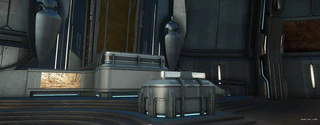
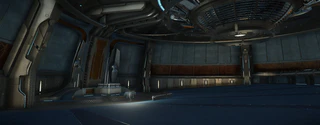
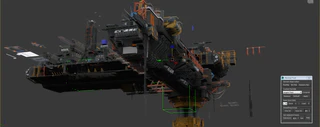
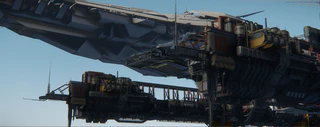
We currently have one cinematic artist in the Frankfurt office, this month his main focus was finishing off the senate scene for the credits cinematic.
He modeled the senate interior with everything included to a semifinal stage, got it to a point that it could be handed off and used for the cinematic. He’s now working on the final stage and putting in the last tweaks and details.
He also started to work on the Skydock (also part of the credits cinematic), both the textures and mesh was created. He tried to make a kitbash approach to the skydock, using existing pieces to create something totally new. It’s a concept that we’re going to take full advantage of while building out the persistent universe, and we’re very happy with the results we’ve seen so far!
AI
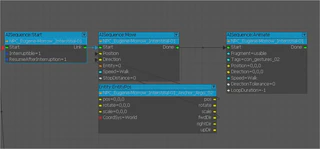
This month we focused on AI functionalities we’re using in a specific section of Squadron 42.
First of all we have integrate the CryEngine AISequence into our system.
Sequences are used to allow level designer to request an NPC to execute a specific activity as walking to a specific spot, reach a position and play an animation, converse with the player, look at a position or entity in the level, and so on. The importance of the sequence is that they allow designers to create a package of operations the character has to do. The package is considered as a whole, meaning we as programmers can make sure that something that is requested for gameplay reasons is going to happen no matter what, that it will have priority. In addition to that we can guarantee the level designers that if they want to abort a set of operations, all the actions following the interruption are not going to be executed.
We then extended the AISequences to support parallel actions. This is a key feature to allow the final results you have seen in the “Morrow Tour” section during the CitizenCon. We can drive an NPC to execute both primary actions (as walking, playing a full body animation, etc.) and secondary actions (as playing upper body animation, use dialogs, etc.) so that we can create a smooth experience between the AI systems as pathfinding and pathfollowing in addition to the Mocap animations related to the actor’s performances. Doing this also required some extension of the Mannequin system so that we can correctly override only specific scopes of a running animation (as an example imagine overriding the facial animation while the character moves).
We continued working on polishing the usage of the Usables as navigation links. We are now able to allow a character to smoothly transition from the locomotion movement to an animation controlled motion as a special vaulting, jumping, and so on.
We are also working in parallel on functionalities for PU and AC. Such as, this month we supported the PU emote system to correctly play looping animation in a multiplayer environment both for players and NPC.
In addition to all of that, the Frankfurt office has continued coordinating the work made by Moon Collider on the improvements of the DataForge/Behavior tree connection, and the improvements/new functionalities for Arena Commander and ships AI in general.
Design
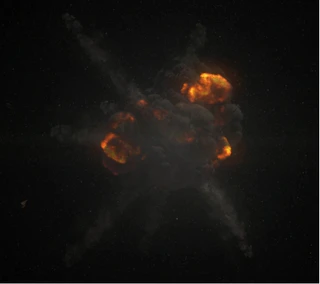
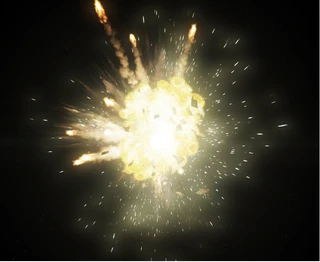
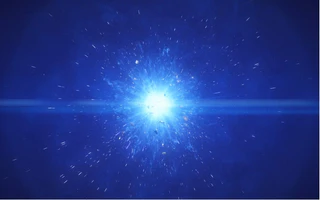
The design team has been focused on numerous things this month. Primarily we were busy refining the design direction for the game and providing feedback on key features for the FPS release making sure it gets completed in a state that everyone is happy with. At the same time we’re hard at work building out the roadmap of all the future content releases, detailing gameplay functionality we need, weapons, dependencies, etc.
The level designers have been working hard on finalizing the Gold Horizon map and finishing off all the specific details required for implementing a new game mode for the upcoming FPS release. At the same time they have started work on the new level & mission building pipeline and the upgraded prefab system that will allow us to create these missions far more efficiently for both Squadron 42 and the Persistent Universe.
On the AI side we are setting up the archetypes, items, mechanics required for the Morrow tour that we will show at Citizen Con this year and setting up the base systems and workflows that will be used for all Squadron 42 and Persistent Universe NPC interactions.
Another focus for us this month has been taking a hard look at the list of career mechanics being developed and figure out how they work with future ships and even existing ones as the cargo, component, and travel systems become increasingly more defined. We need to reassure that the design for both ships and careers work hand and hand with one another. After the research we’ll have a much better understanding of which ship fits which career and what still needs to be worked on for those ships & careers to really shine.
FX
Over the past month we looked into improving some of the effects for the ship weapons. This will make the dog fighting feel more exciting and cinematic. The end result is to make it feel in par with large epic space battles you’ve seen in blockbuster movies. We’ve also been working on polishing up the FPS weapon effects so they are ready for the launch of the fps module. Everything from muzzle flashes to impact effects!
To the right, you can find a few shots of some of the new effects for the dog fighting.
Audio
This month we added the audio scrubbing feature to the Editor TrackView (something that has never been done in CryEngine before), which means that our cinematics team are able to work much more quickly and efficiently on the awesome sequences revealed at CitizenCon. It’s going to pay off over the long term, as there will definitely be more of them in the future!
Aside from this, there was lot of bugfixing and post-integration cleanup work to make sure the audio system code is clean and stable, providing the solid foundation for upcoming modules and features We also hope you liked the audio in the explosions previz shown in Around the Verse! Audio makes a huge difference and good audio really helps to sell the effect. We’re really happy about the feedback and reception that the previz received and look forward to working with the designers and effects engineers to deliver that across all the ships you’ll have in the game.
BHVR
Hello Citizens!
Citizen Con is around the corner and we’ve been working hard throughout September to be able to show you some amazing improvements at this event. Without further ado, here’s what the team has been working on.
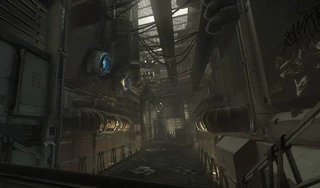
Design
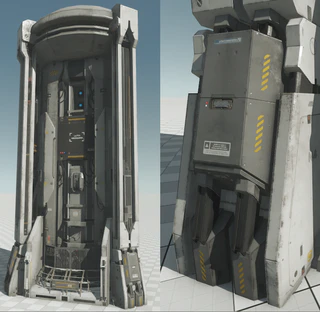
The BHVR design team has got its hands full. We’ve finished the Million Mile High Club whitebox and have created two new shops for planet Nyx: a personal weapon shop and the medical unit. We also designed a new character loadout selector, we cleaned-up the ArcCorp level after its initial release and we created and integrated on a bunch of new flair items. We fixed a tonne of integration bugs on ArcCorp and in hangars and a few other surprises we can’t reveal as we are writing this update. It’s a very exciting (and busy) time for us now that the Social Module has been released.
UI
For the last week of August through to mid-September we were in the UK working with our colleagues at Foundry 42. We spent a lot of time discussing UI unification; when several different people spend over two years working on a various UI systems with very short deadlines between each release, a few inconsistencies naturally develop, but they need to be smoothed out. Working across different time zones can also be quite challenging, so when you can get everyone in the same room together to talk about a UI feature, how it should work, what it should look like, it really makes a big difference.
We also discussed different ways of improving our UI pipeline, identified some troublesome features, worked on how to improve manufacturer style guides (the UI team doesn’t just create interfaces, we are also responsible for a large part of the branding in Star Citizen). We left the UK feeling like we had accomplished a lot of work, and solidified a great working relationship.
Once we got back to Montreal, we kept the momentum going: we planned out our next steps to move towards UI unification, we updated the chat interface, improved the default keybinding control images, created a loadout selector interface, and fixed a whole bunch of bugs.
There are a lot of plans in the works, so stay tuned. Much more to come :)
Art
The art team has been hard at work fully optimizing ArcCorp. Thanks to this optimisation, we will be able to get more players in the same instance. We’ve also built a new area in ArcCorp. It’s still under construction … literally, but this will show how vast and immersive the planetside locations will be.
Code
During the month of September, we’ve worked on adding UI Support for new Chat features such as private conversations as well as a general UI overhaul of the Chat Interface. We’ve also worked on a new useable item and new UI interface which will allow you to customize the player loadout in a more convenient way, rather than using the F6 Key to swap a couple of set outfits.
We’ve been working on providing more information to the player with regards to the locations s/he will travel to via the Transport Elevator Console available in the Hangar. Information such as how many of your contacts and what contacts are already at a certain locations will be provided. We’ve also improved the Control Customization menu by making sure that changes are more frequently saved. Additionally, we’ve started expanding the Contact List functionality UI so that will allow players to form a Party with their Friends.
We have also been helping out on Star Marine. First we’ve been working on the UI and functionality that allows a player to customize his loadout before a Match, making sure that the proper items are available depending on what items/item package he actually owns. We’ve also been providing engineering support for Scoreboards that appear throughout Star Marine matches.
Some of us were flown over to the Manchester CIG Studio this month. During that time, we’ve had the chance to improve the Toolset that allows us to create UI. The main goal was to allow engineers/designers to be more efficient.
In the next Patch, you’ll also be able to appreciate a lot of the optimizations and improvements we’ve made to the holo-framework over the last two months. You might have already noticed some of the new features and optimizations in the Large World Demo that was shown at Gamescom.
Last but not least, a lot of the team effort has been concentrated on stabilizing the build following the integration of changes from a release branch back in to the main game development branch. We’ve worked on making sure that all features we owned are once again up to par.
Til’ next time!
MOON COLLIDER
This month was a great feature development month, with a lot of solid work on improvements, particularly on the ship front. It also saw us adding a new member to our team. Aline joins us from Pennsylvania where she’s just completed her PhD and we’re excited about the boost she brings to our R&D.
So what have we been up to?
We made quite a few improvements this month to Arena Commander and ship combat in general, such as adding a new missile sub-profile to the ship AI. Each ship AI agent is configured via a profile that can be customized by designers to make them behave differently, and to make this job easier, we have several sub-profiles defining different aspects of their behavior, such as their flying style or how they select targets. The new missile sub-profile allows designers to better customize how different ships will make use of their missiles, which will contribute to more variety in combat encounters. This mix-and-match flexibility will give us much more room for creativity and variation when it comes to rolling up varied behaviors in the game without having to limit ourselves to a small set of predefined personalities
We also did some rebalancing and tweaking of various ship behaviors to better support the greater variety of ships that enemy AIs are now able to pilot. With some of the newer ships being faster or more maneuverable than previous ones, we were finding that some of the behaviors weren’t performing as well and resulting in less enjoyable combat. This is always an ongoing process as we try to make behaviors take advantage of the capabilities of the different ships that AI can find themselves piloting.
Some interesting optimization work we did was allowing for obstacles to be defined for AI without requiring CryEngine entities to be created to associate with them. On some of our maps we have thousands of objects that ships need to avoid, and having to create full CryEngine entities to register each one as an obstacle can become expensive. Sometimes you still want this for other reasons, but with simple objects like rock fragments floating in space you can take advantage of registering it as a much more lightweight and simple object. So this will allow for performance improvements and creating larger and more complicated levels.
One really exciting task that we’ve just started on and will talk about a lot more next month is death spirals. This is the addition of cool death behaviors by ships to make defeating enemies feel even more satisfying. Once you’ve damaged an enemy ship so much that it’s going to be destroyed, we want to look at some different ways of making it fly out of control and possibly explode. This makes for great readability since it lets you see that the enemy is no longer a threat, and it allows you to savor the victory of a tough battle a little longer. There are several different approaches that we’re experimenting with to see what works well and what doesn’t, so keep an eye out for the results in next month’s report!
On the character behavior side of things, we’ve been making some improvements to how our behavior trees handle switching characters between performing different high level tasks. The Kythera architecture now supports a couple of different behavior paradigms, but the one we used for ships was based on the idea that when you tell an AI to do a new task, he will switch to a different behavior tree to do it. However, in character AI, smooth, carefully choreographed transitions are vital for high-quality results, and so it can be helpful to keep them running a single larger behavior tree and have them switch between different parts of that tree to perform different tasks. So we’ve added various bits of infrastructure that allow a tree to register itself as handling multiple tasks, while also making it easy to add handling of those task switches in the tree.
Finally, we added a few new features to the Kythera Inspector web debugging tool, particularly in order to allow better debugging of those big behavior trees I mentioned above. With smaller trees you can usually see the whole thing within your browser window without a problem, but with these really large trees you need to pan around a lot, and the existing scroll bars just didn’t cut it. So we added in a panning feature where you can just hold down your left mouse button and drag the tree around to see the part that you’re interested in. We also added in some persistence features so that if you’re looking at the behavior tree of a particular AI and you want to hop out of the game and make changes to the tree, when you hop back into game the Inspector will remember the AI that you were looking at and keep it selected for you, which streamlines behavior iteration and debugging. Whether or not that sounds exciting to you, the tool should help the content creators do their work more easily. The result: more content for you!
That will do it for this month. We currently have several cool ship related features that we’re working on (in addition to the death spirals mentioned above), but you’ll have to wait until next month to find out more!
TURBULENT
Greetings from Montreal! Here’s what we’ve been up to in the last month:
Community Hub
Last month, we launched the Community Hub and were overwhelmed by the quality and variety of your submissions. Keep it up! For those of you who haven’t checked it out yet, the Community Hub is your home for user-generated content (Citizen Spotlight), interesting links around the ‘Verse (Deep Space Radar), Livestreams and Podcasts. Staff picks will be displayed on the landing page, but you can click on “View All” to see all the contributions. Enjoy!
Issue Council
We released the Issue Council in the middle of the month, and we’ve already received over 500 bug reports. By using this tool, the community can contribute, evaluate and prioritize bug reports. Members can confirm bug reports, and up-vote or down-vote them. Once a bug report has been triaged and prioritized by the community, CIG can select which reports become “Acknowledged.” Acknowledged bug reports are automatically entered into CIG’s internal bug tracking software, so that they can be assigned to their developers. By involving the community from the very beginning, we save CIG developers a lot of time evaluating reports and identifying which ones are duplicates or invalid. The more you use the Issue Council, the more time (and money) that is saved!
Ship Upgrades
We continued to work on the revamped Ship Upgrade system, whereby you can upgrade one ship for another. The new user interface will make it a lot easier for you to choose from a list of eligible ships. You will be able to access this feature from your Hangar or from the Pledge Store.
Referral Program
Want to invite your friends to play Star Citizen? Now’s the best time to start recruiting new players and to take advantage of our Referral Program. Each member has a unique Referral Code which they can share with their contacts. If your friend signs up for an account on the website, they will automatically receive 5,000 UEC. And if they buy a Starter Package, you will earn 1 Recruitment Point. The more Recruitment Points you earn, the more rewards you will receive. To view all the possible rewards, click on the “Referral Program” tab in your RSI account page.
Squadron 42 Landing Page
To prepare for the CitizenCon announcement, we built a landing page to showcase the upcoming Squadron 42 single-player campaign. As we are given more information about the game, we will be adding more content to this page, and expanding the section to include the background story and other information about the game. Stay tuned!
Starmap
We have been pulling out all the stops to have the Starmap ready for presentation at CitizenCon. On the visual side, we added a preliminary set of textures for the different Planet types, configured different looking stars for every Star System, re-skinned the long-range scanners, tweaked the animation of the routes, and completed the user interface. We also added an intro loading screen and WebGL detection screen.
On the development side, we completed the routing algorithm (choosing the best routes between two Systems) and search tool. We’ve also worked closely with the CIG writers to validate all the data in our Starmap.
We’ve been working with the CIG audio department to add new sound effects to the Starmap, including original background music. You will have the option to toggle off the sound, but we believe you’ll want to keep it on.
By the time you read this, the Starmap demo will be available for your viewing pleasure. We hope you will love it!
Ship Happens
This was an exciting month for ship launches! We saw the unveiling of the Vanguard variants, the Harbinger and the Sentinel, fulfilling bomber and e-warfare roles respectively. We also introduced Battlefield Upgrade Kits, to be able to change the role of your Vanguard, bringing a whole new level of choice and variety to the already awesome ships. Not only was there the Vanguard sale in September, but also, right now the Endeavor science vessel was made available for the first time. The Endeavor was another exciting launch as it introduced the community to the idea of science as a role in the universe. Continuing with the theme of choice and variety, the Endeavor is being sold in packages with different science pods, or separately so you can mix and match pods to suit your needs for your next mission. Check it out while it’s still available (which is only a few more hours!)
// END TRANSMISSION
